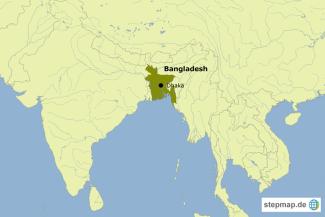Health
Bangladesh’s contradictions

Child malnutrition in Bangladesh is “amongst the highest in the world,” says Debashis Shaha of Plan International Bangladesh, a non-governmental organisation. “Two-thirds of the children under the age of five are under-nourished, and about 60 % of those under six are stunted.”
Public health consultant Sadia Dilshad Parveen adds that “according to the World Bank, about one third of babies in Bangladesh are born with low birth weight.” The consequences include a higher infant mortality rate and a greater risk of diabetes.
Part of the problem is due to adverse natural conditions, Parveen explains: “Most terrain of Bangladesh is low-lying and prone to flooding. A large part of the population lives in areas that are at risk of extreme annual flooding which destroys the crops, thereby causing food shortage.”
On top of that, lack of water supply, hygiene and sanitation reinforce infectious diseases such schistosomiasis and other parasitic diseases, according to Nurul Amin, professor of environmental science and management at North South University, a private school based in Dhaka. He says that, in their environment, people are “permanently exposed to faeces”. As a result, their immune system fails and “diarrhoea or vomiting exacerbate loss of nutrients.”
On the other hand, the pace of growth of Bangladesh’s health sector is “most striking” among South Asian countries, according to the academic journal The Lancet, even though Bangladesh spends less on this sector than several neighbouring countries. Researchers identified several factors that put the country on track to achieve the health-related Millennium Development Goals. Strong points include:
- the prioritisation of family planning,
- the development of human resources, particularly paramedics, health assistants and family-welfare assistants,
- progressive policies outside the health sector, including education and female empowerment and
- facilitated access to health facilities and information.
This mix has worked as a catalyst, raising health awareness and spreading knowledge about health options and facilities.
The pharmaceutical industry in Bangladesh is one of the most developed technology sectors within this country. Manufacturers produce insulin, hormones and cancer drugs. This sector provides 97 % of the total medicinal requirement of the local market. The industry also exports pharmaceuticals to global markets. Bangladesh’s pharma market is currently valued at $ 1.3 billion and has created around 100,000 jobs.
Khadija Farhana is development communication professional and freelance journalist. She lives in Dhaka, Bangladesh.
tithefarhana@gmail.com







